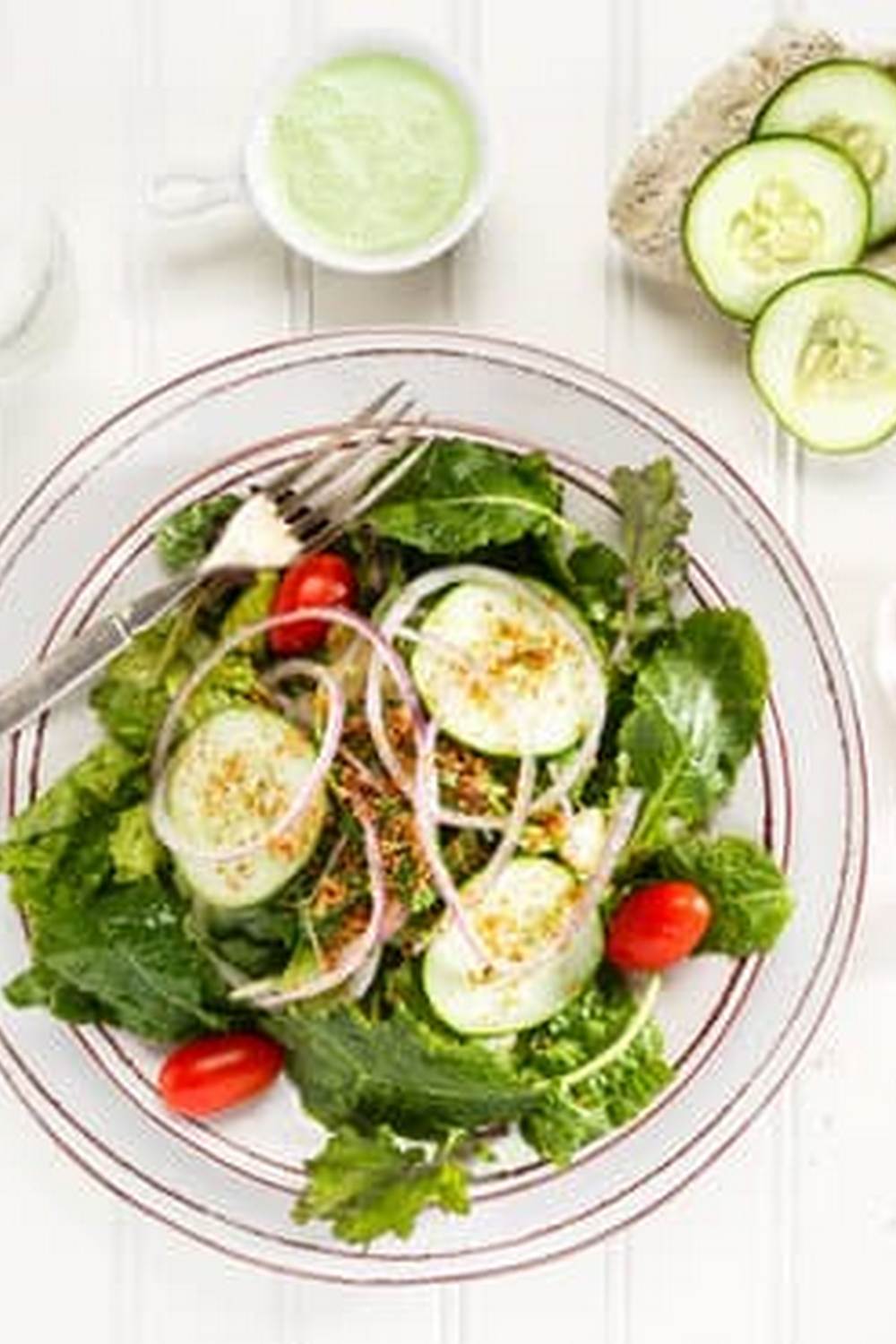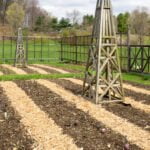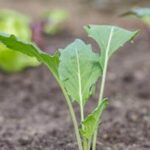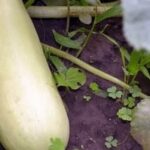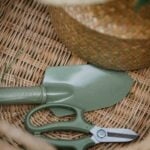Are you interested in starting your own vegetable garden but not sure where to begin? One of the most crucial aspects of a successful garden is having the right tools at your disposal. In this article, we will delve into the world of basic vegetable gardening tools that every aspiring gardener should have in their arsenal. From essential hand tools to watering techniques and pest control methods, we will cover everything you need to get started on your gardening journey.
When it comes to embarking on a fruitful vegetable gardening adventure, having the right equipment is key. Basic vegetable gardening tools are essential for tending to your plants, ensuring they receive proper care and attention. From simple hand tools like trowels and pruners to digging implements such as shovels and spades, each tool plays a specific role in helping you cultivate a bountiful harvest.
As you dive into the world of basic vegetable gardening tools, you will discover the importance of each tool and how they contribute to the overall success of your garden. Whether you are a seasoned gardener or a novice looking to start your first garden, having the right tools can make all the difference in creating a thriving vegetable patch.
So let’s explore the various types of tools you will need and how to choose the right ones for your specific gardening needs.
Essential Hand Tools for Vegetable Gardening
When diving into the world of vegetable gardening, having a set of essential hand tools is crucial for success. These basic vegetable gardening tools can make tasks easier and more efficient, allowing you to tend to your plants with ease. Whether you are a beginner or a seasoned gardener, having the right hand tools can significantly impact the health and growth of your vegetables.
Trowel
One indispensable tool for any vegetable gardener is a trowel. This handheld tool is perfect for digging small holes for planting seeds or seedlings, transplanting young plants, and removing weeds. A sturdy trowel with a comfortable handle will make these tasks much more manageable and less strenuous on your hands.
Pruners
Another essential hand tool is a pair of pruners or secateurs. Pruning your vegetable plants is vital for promoting healthy growth and preventing diseases. With a sharp pair of pruners, you can easily trim overgrown branches, dead leaves, and damaged stems to encourage new growth and improve airflow within your garden.
Garden Fork
A garden fork is also an important tool to have in your arsenal. This tool allows you to aerate the soil around your vegetables, breaking up compacted earth to improve drainage and root penetration.
It’s also handy for turning over compost piles and mixing amendments into the soil to provide essential nutrients for your plants’ development. By investing in these basic vegetable gardening tools like trowels, pruners, and garden forks, you can set yourself up for success in cultivating a bountiful vegetable garden.
Must-Have Digging Tools for a Successful Garden
Digging plays a crucial role in vegetable gardening as it ensures the proper preparation of the soil for planting. Having the right digging tools can make this task much easier and more efficient. One of the most essential digging tools for a successful garden is a garden spade.
A garden spade is a versatile tool that can be used for various tasks such as turning soil, digging holes for planting, and edging borders. Its strong blade and handle are designed to withstand heavy-duty use, making it an indispensable tool for any gardener.
Another must-have digging tool for vegetable gardening is a garden fork. Unlike a spade, a garden fork has sharp tines that are ideal for loosening compacted soil, breaking up clumps, and mixing amendments into the earth.
The ergonomic design of a garden fork allows for comfortable and efficient use while minimizing strain on your hands and wrists. Whether you are preparing new beds or maintaining existing ones, a garden fork is an essential tool to have in your gardening arsenal.
For larger-scale projects or tougher ground, a shovel is another essential digging tool to consider. With its sturdy blade and long handle, a shovel is perfect for moving large amounts of soil, compost, or mulch with ease.
Whether you need to dig trenches, transplant shrubs, or remove roots, having a reliable shovel on hand will save you time and effort in your vegetable garden. By investing in these basic vegetable gardening tools like a garden spade, fork, and shovel, you can ensure that your digging tasks are efficiently handled to set the stage for healthy plant growth and bountiful harvests.
Watering Tools and Techniques for Healthy Plants
Watering is one of the most crucial aspects of maintaining a healthy vegetable garden. Without proper hydration, plants can wither and die, resulting in a failed harvest. To ensure that your vegetables receive the right amount of water, it is essential to have the appropriate watering tools on hand.
One of the basic vegetable gardening tools you will need for watering is a good quality garden hose. Invest in a durable hose that is long enough to reach all areas of your garden without difficulty. Additionally, consider purchasing a hose nozzle with adjustable settings to control the flow and pressure of water.
In addition to a garden hose, having a watering can be useful for targeted watering of specific plants or areas. Watering cans are ideal for delicate seedlings or plants that require gentle watering. Look for a sturdy watering can with a removable rose attachment to disperse water evenly and prevent damage to fragile plants.
| Watering Tool | Importance |
|---|---|
| Garden Hose | Essential for reaching all areas of the garden efficiently |
| Watering Can | Ideal for targeted watering of delicate seedlings |
Garden Maintenance Tools to Keep Your Vegetables Thriving
Weeders
Weeding is a necessary task to keep your vegetable garden healthy and thriving. Investing in a quality weeder can make this job much easier. A hand weeder with a sharp, sturdy blade can help remove weeds from the root and prevent them from coming back. There are different types of weeders available, such as fishtail weeders, hoes, and twist weeders, so choose one that suits your needs and gardening style.
Pruners
Pruning is essential for promoting healthy growth in your vegetable plants. Having a good pair of pruners can help you trim dead or overgrown branches, improve air circulation within the plant canopy, and encourage fruit production. Look for bypass pruners that have sharp blades and a comfortable grip for ease of use. Regular pruning with the right tools can lead to better yields and healthier plants in your garden.
Garden Gloves
Protecting your hands while working in the garden is crucial, especially when handling thorny plants or using tools that could cause blisters. Invest in a pair of durable gardening gloves that fit well and provide adequate protection without sacrificing dexterity.
Whether you’re pulling weeds, handling soil, or pruning plants, having the right gloves can make these tasks more comfortable and prevent injuries to your hands. Remember to choose gloves made from breathable materials to avoid sweating and discomfort during extended garden maintenance sessions.
By incorporating these essential garden maintenance tools into your gardening routine, you can ensure that your vegetable plants receive the care they need to thrive and produce bountiful harvests. Proper weeding, pruning, and protection of your hands are essential aspects of maintaining a healthy garden environment. With the right tools at hand, you’ll be well-equipped to address any maintenance tasks that arise throughout the growing season and set the stage for a successful vegetable garden experience.
Pest Control Tools and Methods for Protecting Your Harvest
Pest Control in the garden is crucial to protect your harvest and ensure the health of your plants. There are various basic vegetable gardening tools and methods that you can use to effectively control and manage pests without resorting to harmful chemicals.
One essential tool for pest control is the garden hoe, which can help you physically remove weeds that may harbor pests. By keeping your garden free of weeds, you can reduce hiding spots and breeding grounds for unwanted insects.
Another important tool for pest control is the hand pruner, which can be used to remove damaged or infested parts of plants. By promptly cutting off affected areas, you can prevent pests from spreading further and causing extensive damage to your vegetables. Additionally, having a pair of gardening gloves is essential when dealing with pest control as it not only protects your hands but also offers a barrier against potential irritants.
In addition to tools, there are several natural pest control methods that you can implement in your vegetable garden. For example, companion planting involves growing certain plants together to deter pests or attract beneficial insects that prey on harmful ones.
Another effective method is using organic pesticides such as neem oil or garlic spray, which are safe for the environment and human health while targeting specific pests. By combining these methods with the right basic vegetable gardening tools, you can effectively protect your harvest and promote a thriving garden ecosystem.
| Basic Vegetable Gardening Tool | Usage |
|---|---|
| Garden Hoe | Physically remove weeds that may harbor pests |
| Hand Pruner | Remove damaged or infested parts of plants to prevent pest spread |
| Gardening Gloves | Protect hands from irritants while working on pest control |
How to Choose the Right Basic Vegetable Gardening Tools for Your Needs
When it comes to starting your vegetable garden, choosing the right basic vegetable gardening tools is essential for success. With a wide variety of tools available on the market, selecting the ones that suit your needs can be overwhelming. To help you make the best decision, here are some tips on how to choose the right tools for your vegetable garden:
1. Assess your gardening needs: Before purchasing any tools, take some time to assess your gardening needs. Consider factors such as the size of your garden, the types of vegetables you plan to grow, and the frequency of maintenance required. This will help you determine which tools are necessary for your specific requirements.
2. Quality over quantity: When selecting basic vegetable gardening tools, prioritize quality over quantity. Investing in high-quality tools may cost more initially, but they will last longer and ultimately save you money in the long run. Look for tools made from durable materials that can withstand regular use in outdoor conditions.
3. Consider ergonomics: Gardening can be physically demanding, so it’s important to choose tools that are comfortable to use. Look for ergonomic designs with features such as cushioned handles and adjustable shaft lengths. These features can help reduce strain on your hands and back, making gardening tasks more enjoyable.
4. Research product reviews: Before making a purchase, research product reviews online or ask fellow gardeners for recommendations. Reading about other gardeners’ experiences with specific tools can provide valuable insights into their performance and durability. Additionally, consider visiting a local garden center to test out different tools before making a decision.
By following these tips on how to choose the right basic vegetable gardening tools for your needs, you can set yourself up for a successful and enjoyable gardening experience. Remember that having the right tools not only makes tasks easier but also contributes to the overall health and productivity of your vegetable garden. Selecting quality tools that suit your specific requirements will ultimately lead to a bountiful harvest of fresh produce from your own backyard oasis.
Tips and Tricks for Maximizing the Efficiency of Your Garden Tools
When it comes to basic vegetable gardening tools, maximizing their efficiency is key to a successful harvest. By properly maintaining and using your tools, you can ensure that your garden thrives and yields bountiful produce. Here are some tips and tricks to help you make the most out of your gardening tools:
- Keep your hand tools sharp: Sharp hand tools make it easier to prune, weed, and harvest vegetables in your garden. Regularly sharpening your pruning shears, scissors, and knives will ensure clean cuts that promote plant health.
- Properly clean and store your digging tools: After each use, make sure to clean off any soil residue from your digging tools to prevent rusting. Store them in a dry place to prolong their lifespan and maintain their effectiveness.
- Invest in quality watering equipment: The right watering tools can make a significant difference in the health of your plants. Consider using soaker hoses or drip irrigation systems to deliver water directly to the roots of your vegetables efficiently.
In addition to taking care of your basic vegetable gardening tools, proper technique can also enhance their efficiency. For example, when using a hoe or rake, ensure that you’re using them at the correct angle and with the right amount of pressure for maximum effectiveness. Learning how to correctly use each tool will save you time and energy while working in the garden.
By following these tips and tricks for maximizing the efficiency of your garden tools, you’ll be well on your way to a successful vegetable garden. Remember that investing time in maintaining and using your tools properly will pay off with healthy plants and a plentiful harvest.
Conclusion
Starting your own vegetable garden can be a rewarding and fulfilling experience, but having the right tools is essential for success. As discussed in this article, the use of basic vegetable gardening tools is crucial in maintaining a healthy and thriving garden. From essential hand tools to must-have digging tools, watering devices, garden maintenance equipment, and pest control methods, each tool plays a vital role in ensuring the productivity of your plants.
Investing in the proper basic vegetable gardening tools not only makes gardening more efficient but also helps prevent unnecessary strain on your body. By selecting high-quality tools that suit your gardening needs, you can significantly improve the overall health and yield of your vegetables. Remember that having the right tools on hand can make a significant difference in the success of your garden.
In conclusion, whether you are a beginner or an experienced gardener, it is crucial to equip yourself with the necessary basic vegetable gardening tools to start off on the right foot. By following the tips and tricks mentioned in this article and selecting the appropriate tools for your specific needs, you can create a flourishing garden that will provide you with fresh and nutritious produce all season long.
So don’t hesitate – get started on building your vegetable garden today with the right tools by your side.
Frequently Asked Questions
What Does Every Vegetable Gardener Need?
Every vegetable gardener needs essential items such as good quality soil, seeds or seedlings, water source, sunlight, and gardening tools. Proper planning, research, and dedication are also necessary to ensure a successful harvest.
What Tools Do You Need to Make a Vegetable Garden?
To make a vegetable garden, you will need basic tools like a shovel, rake, hoe, watering can or hose, and gloves for protection. Other useful tools include a trowel for planting small seeds or transplants, pruning shears for trimming plants, and a wheelbarrow for transporting heavy materials.
What Do I Need to Buy for a Vegetable Garden?
When starting a vegetable garden, it is important to buy high-quality seeds or seedlings from reputable suppliers. You may also need to invest in organic fertilizers or compost to enrich the soil with essential nutrients for plant growth. Additionally, consider purchasing garden stakes or cages for supporting tall plants like tomatoes or peppers.

If you’re looking to get into vegetable gardening, or are just looking for some tips on how to make your current garden better, then you’ve come to the right place! My name is Ethel and I have been gardening for years. In this blog, I’m going to share with you some of my best tips on how to create a successful vegetable garden.

